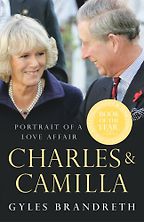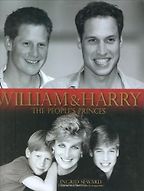Diana Books
Last updated: September 10, 2022
Diana, Princess of Wales, as her brother said at her funeral, needed no royal name to work her particular magic. In fact, so great was the power of her star-dust that she needed nothing other than her first name. If someone mentioned ‘Diana’, it was her. From 1980, if you were talking the ancient goddess of hunting, you had to point that out.
When she married the Prince of Wales Diana was seen as the perfect royal spouse, someone whose family had close links to the crown and who would be undaunted by the role because she already, to some extent, knew the ropes. What no one had accounted for was that, although she had the savoir-faire to be a royal consort, she also had the je ne sais quoi of an uber-megastar. Everyone thought she was taking up a life of service to the crown but, entirely without knowing it, her stardom was destined to transcend her royal role, her nationality and, arguably, herself.
Dianamania was born the moment she hit the headlines in the early 1980s. It continued to rage until her tragic death in Paris in 1997. No one knew how to handle it, not the royal family, not us, not her. The press plagued her from beginning to end, to feed the insatiable appetite of her global fan base. Through no fault of the royal family’s or Diana’s she ended up resembling an enormous cuckoo in their under-sized nest. Diana put her global fame to good uses in her charity work, but none of that positive impact could mask the fact that she ended up imprisoned metaphorically and, to some extent literally, by her popularity.
Here are five books that will go some way to understanding Diana’s life, where she came from, her role in the royal family and her status and impact as a cultural phenomenon—a woman who had more followers and was a greater influencer than all the denizens of Twitter and Instagram combined could ever dream of.
Diana: Her True Story — In Her Own Words
by Andrew Morton
A game changing book that sold millions of copies on its publication in 1992 and millions more at Diana’s death in 1997. Much rubbished on its publication by ‘the Establishment’, it turned out that Diana had collaborated extensively with Andrew Morton and that this was, indeed, her true story. Not a literary masterpiece, but packed with details about Diana’s unhappy and unfulfilled life. Essentially an old-fashioned, massive, book-length scoop. It changed the British monarchy and, arguably, Britain.
The Diana Chronicles
by Tina Brown
A much acclaimed book. It was published 10 years after Diana’s death in 2007. It puts Diana’s life into the broader social context of the 1980s and 1990s, the period Tina Brown had chronicled in at the height of her stellar journalistic career. The book offers a sympathetic portrait of Diana.
Charles and Camilla Portrait of A Love Affair
by Gyles Brandreth
This book paints an affectionate portrait of Prince Charles and Camilla and their relationship. Camilla suffered years of abuse after the whole saga of Diana’s misery was exposed. But, as Brandreth illustrates, she’s good company, good for Prince Charles and always has been. This is the happy (if not fairy-tale) ending of the story.
William and Harry
by Ingrid Seward
A portrait of Diana’s children, with plenty of material on their early years, when Diana was still alive. This provides another perspective on Diana as a person and the role she appeared most obviously content it, as a mother. It also looks at how William and Harry have, since her death, sought to preserve her memory and extend the legacy of her charitable work.
The Queen: Elizabeth II and the Monarchy
by Ben Pimlott
A look at the life of the Queen by a political scientist. This book is not gossipy or journalistic. It seeks to understand the role the Queen has played in British life for almost a century (with nearly 70 years as Queen), as a bulwark of stability and duty. It looks at her relationships with politicians, but also with her family and Diana. Important background to understanding why Diana was initially seen as such a boon for the royal family and why, ultimately, she was unable to fit in to the institution in the way she was expected to.




